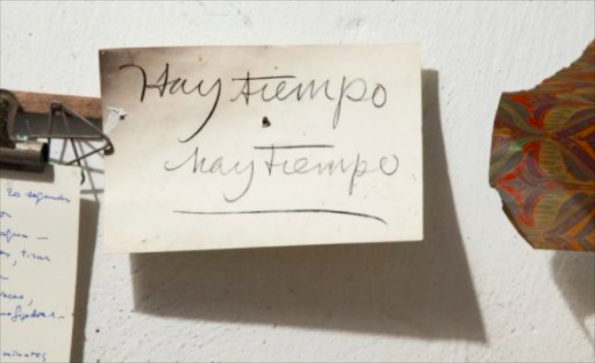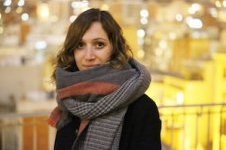Search
To search for an exact match, type the word or phrase you want in quotation marks.
A*DESK has been offering since 2002 contents about criticism and contemporary art. A*DESK has become consolidated thanks to all those who have believed in the project, all those who have followed us, debating, participating and collaborating. Many people have collaborated with A*DESK, and continue to do so. Their efforts, knowledge and belief in the project are what make it grow internationally. At A*DESK we have also generated work for over one hundred professionals in culture, from small collaborations with reviews and classes, to more prolonged and intense collaborations.
At A*DESK we believe in the need for free and universal access to culture and knowledge. We want to carry on being independent, remaining open to more ideas and opinions. If you believe in A*DESK, we need your backing to be able to continue. You can now participate in the project by supporting it. You can choose how much you want to contribute to the project.
You can decide how much you want to bring to the project.

Mexico 1902. Manuel Álvarez Bravo is born, who, throughout his life, forges a career as a photographer that finally brings him a lot of recognition. Forty years later, in Zaragoza, Rafael Navarro is born, who also develops a career as a photographer. This distance in time doesn´t impede Álvarez Bravo and Navarro getting to know each other and what is more the two photographers establish a firm friendship and share works, time and words.
In 2002, at a hundred years old, the Mexican dies, leaving his widowed wife hundreds of images of the landscape of his country and his things in the studio.
Navarro continues working, and in 2006 published the book of photographs “En el taller de Miró”. The project consisted in photographing the studio of the Catalan painter when he was no longer there. Photographs, in black and white, of details, of all sorts of objects that were left in the space, as if lying in wait. The collection makes one think of the endeavour to portray, through the objects, a person who has disappeared, in the only place that it is possible to look for him; as if the one who has gone lies in what was his context. But there is a key element here: Miró and Navarro never met. On a conceptual level it is worth bearing this point in mind, given that it is not the same to work in the space of someone who has died but that one never knew, as it is to work in the space and with objects that belonged to a friend. And this difference is made evident in comparing the images from the series “En el taller de Miró” and those from the more recent “Presencias de una ausencia”(Presences of an absence) in which Navarro has carried out the same procedure as in the project about Miró’s studio, but here entering into the 4 walls that had held the hours of work of the master photographer and friend, that Álvarez Bravo was to him.
One part of this latest series is currently being exhibited at the Galería Kowasa, along with some photographs of the work about the studio of Miró, that aren’t shown in the white walled exhibition space of the gallery but in the office. The new series represents Navarro’s leap not just into colour but also into digital photography. Printed on cotton paper, they have unsaturated colours and some of the images end up being almost monochrome, as if dealing with black and white. This work is in concordance with the series “El taller de Miró”, not just on a conceptual level, but also on a formal one. Both cases coincide in the particularity that all the photographs are images of details of objects. But if in the case of Miró the photographer works showing himself to be somewhat removed, photographing brushes and other painting tools; Navarro takes on a more familiar role in the case of Álvarez Bravo, taking photographs that talk more of the character and interests of the person, than of what he was recognised for, as in the case of Miró.
In the two works an ambiguous space is presented, given that the images don’t show grand general views of a place, but little fragments that construct and fill it. The spectator can´t gain a clear idea of how this room is distributed, but does on the other hand have the sensation of getting close to the Mexican photographer and feeling as if one knows him a bit better. The exhibition begins with a very relevant image: a note that Álvarez Bravo must have had pinned somewhere, where one reads, “Hay tiempo, hay tiempo” (There’s time, there’s time). A potent image with which to begin, for me the most significant of all of them. It’s just a note that Álvarez Bravo kept for himself, one that is revised by Navarro. In the rest of the images one can see decorative objects that denote his appreciation of cats, books, some bits of furniture, his garden and tools of the photographic laboratory, but not one of them reveals something as personal as a note with a message like this can be. For working with photography is to work with time and in time, and in some cases can signify dedicating a whole life to capturing just that fleeting instant. In some way this note reminds us of those small refuges that we build, that our eyes stray to when one has to remind the mind that, above all, we are alive and that there is time –just as Miranda July does in the film “Me and You and Everyone We Know” with the three pink stickers she has stuck in different places-. That Navarro photographed it and wanted to begin the exhibition in this way is also significant, because finding oneself in the space of a friend who will not return, the mind can need a refuge like this. On the other hand, for the spectator who arrives at the space, this first image can suppose an instruction about how to move between the photographs that are to come, because “Hay tiempo hay tiempo”.

Anna Dot was born on a Sunday in April. She is from Torelló and works between two worlds, worlds that she cannot perceive as being in any way separate: one of artistic production and one of reflection, writing about contexts of art.
"A desk is a dangerous place from which to watch the world" (John Le Carré)